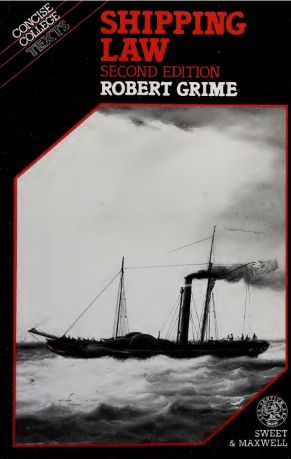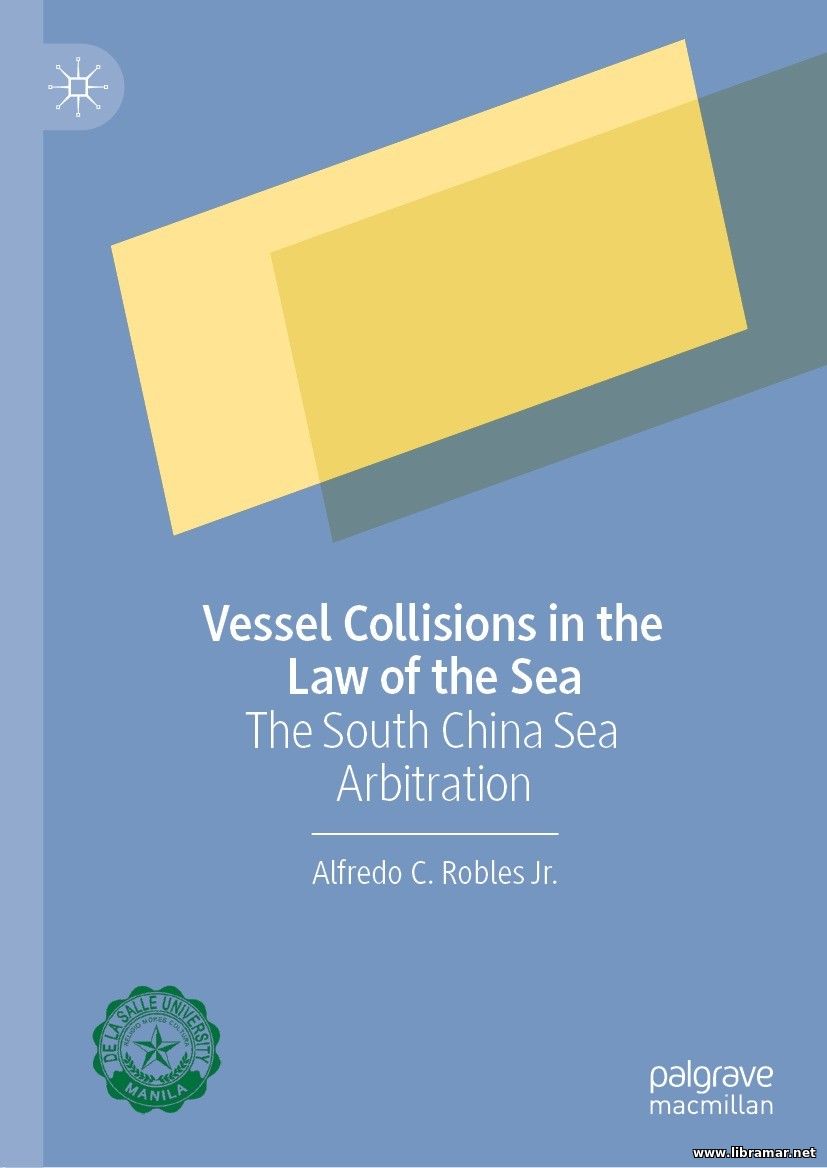 It has been quite a long time since the first edition of this book was published. Therefore, the author can confidently state that all the most valuable and constructive criticisms from the initial edition have been incorporated. He feels secure in this claim, as he believes no one will remember the previous shortcomings.
The goal remains unchanged: to present a challenging, complex, yet fascinating area of law in an accessible manner. It is hoped that this approach will benefit both lawyers without specialized expertise who wish to take first steps toward learning, and non-legal practitioners involved in shipping who can gain insight into what lawyers are doing in this field. In addition to updating the content, several sections have been expanded. Notably, Chapter 10 on Marine Insurance—which was embarrassingly brief in the first edition—is now the longest chapter.
This expansion was directly influenced by positive feedback received earlier. The initial chapters have also been reorganized considerably to include discussions on the interaction between international conventions and local laws, as well as the roles of international organizations and national governments. The format remains consistent: footnotes are deliberately avoided, but relevant cases are included within the text as illustrative examples.
 The present publication shall be treated as one of the most authoritative resources for litigation in the admiralty court, offering unparalleled commentary and analysis of admiralty law along with insights on the court's jurisdiction and procedures. Here is the fifth edition of this brilliant title, which has become the premier reference for contemporary maritime practitioners.
It addresses various topics not found elsewhere, such as the effects of insolvency, the relationship between jurisdiction and practice, applicable limitation periods, the influence of international conventions, and the litigative approach to collision claims.
This updated edition incorporates new case law and significant changes to practice and procedure and it also discusses the implications of Brexit and updates to CPR Part 61 and its associated practice directions, particularly concerning limitation claims and the recent rules for pleading collision claims. This book is the essential choice for anyone engaged with admiralty law, serving as a crucial resource for maritime professionals in England and the international common law community.
 In this volume, the team of recognized maritime law professionals tries to answer the most important questions related to the security challenges as applied to the United States. They analyze the modern legal challenges for America together with the naval operations confronting them. In fact, this is the first volume on the operational law addressing such the important aspects never been dealt with in detail before.
The idea of the authors was to provide industry with the proper platform so that the practitioners can benefit from the expertise in the contemporary maritime law. The ongoing trends have been addressed and analyzed in detail. There are four main parts in the book, staring with the introduction and the maritime challenges of today, followed by the information on the international straits and associated rights and obligations.
The third part of the book is entirely devoted to the maritime security and safety, while the closing part addresses the law of the armed conflict, including the historical background, contraband and prize, public international law etc. The volume will definitely be interesting to the maritime lawyers and as such is recommended to them all.
 The main intention of the author of the present title, Alfredo C. Robles, Jr. was to provide good coverage of the principal decision made during the Tribunal court held in South China Sea Arbitration in connection with operating of the law enforcement vessels in a manner that led to the potential collision with the ships belonging to the Philippine fleet back in 2012.
The detailed explanation of the provisions of the COLREG has been provided together with the incidents, involving the layperson’s terminology. The author has presented a detailed analysis of the violations which were done by the China vessels of the aforementioned collision prevention regulations based on the content of the previously classified documentation as well as the outcome of the technical works conducted by the experts in the field.
The research made by the author is really impressive as the sources of information used when preparing this report included numerous documents and reports in five languages, contributing in the holistic picture of what did happen and why. The volume will be interesting not only to the marine lawyers but actually to anybody willing to keep in the loop of the happenings in the industry and their underlying reasons.
 Even there can still be some minor discrepancy in the numbers, depending on the information source used, more than seven hundred ocean-going vessels are scraped every year. In most cases, this process takes places somewhere on the seashore of the Indian area.
It should be noted, however, that the vessels normally have different hazardous materials contained in their structure; also, these substances can exist within the wastes generated by the vessel during the passages. Since the process of scraping is traditionally manual, this means that the people involved are in danger.
In fact, there was not too much of attention paid to the shipbreaking problem in the past, and only some ten years ago the relative international treaty was released and ratified to target the potential harm to the people as well as the marine environment, considering the pollution.
The efforts made by the industry professionals to regulate same through the Basel Convention have eventually led to the absolutely different opinions on the applicability of the subject document. The second big success was the presentation and adoption of the Hong Kong Convention to help implement the effective controls.
 This is the sixth edition of one of the most popular titles on the maritime law. The publication features a truly exhaustive coverage of all topics and will be excellent for both the newcomers to the world of law and the experienced specialists. Note that all latest changes in the legislation are duly reflected in the pages of this publication. There are thirteen main sections in this book and it opens with the one explaining the ship ownership and registration.
It is followed by the sections on the ship mortgage and ship sale, contracts for the new construction of the ships, bills of lading and charter parties, maritime claims and admiralty jurisdiction, sovereign immunity etc. the second half of the volume deals with such important areas as the ship collision and salvage, towage of the vessels, pollution of the marine environment caused by the oil spills, limitation of the liability, pilotage, and passengers.
The tables of cases, international conventions, and legislation are also included. The appendices to the main content provide additional information, including the texts of the several conventions, protocols, acts, agreements and standard forms. This is a must-have for all lawyers involved in the maritime industry.
 We all know that for the decades, the energy efficiency of the vessels has been one of the most serious concerns for both the owners and the charterers. We can say that the operational efficiency is made of the different factors, each of them pointing in one direction, and each of them shall be considered as necessary.
Traditionally, the performance of the vessel has been reflected within the associated charter party, being directly connected with the speed as well as the fuel consumption during the voyage. The idea of the authors of this volume was to provide industry with some professional insight in this regard.
The readers will find useful solutions to be applied when addressing the relevant term in their contracts, coming to the energy efficiency. The authors have included the results of the thorough analysis of the major law concepts, discussing them and applying both economic and commercial approaches.
The whole chartering process has been covered, with the focus made on the shipping industry of today. In fact, the authors have managed to brilliantly fill the existing knowledge gap, giving readers the information that was quite difficult to find or just not existing. It is a genuine treasure for the people engaged in the EEDI activities.
 The content of this book was prepared by three authors was intended to address the current problems of the Arctic region. It actually draws on the results of the Arctic TRANSFORM project of 2008-09 which was funded by European Commission. Subject project engaged the best experts in a transatlantic dispute on the roles of the EU/US in light of the changing climate in Arctic region as well as legal and political complexities.
This publication is covering the developments and changes in the marine Arctic and provides recommendations together with the descriptions that reflect the current governance environment. The chapters of the document are exploring the activities and potential impacts by the industry sector, covering the shipping, fisheries and offshore exploration of the hydrocarbons in the Arctic region and looking at the strategies and policies that were developed to improve the marine governance. A very interesting and important publication reflecting the extensive research conducted by the recognized experts in the field.
|







